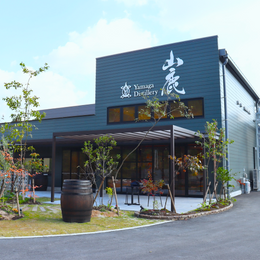Of Lambics, Gueuzes & Krieks: How Cantillon Rode The Coolship And Became The Beer Lovers' Funky Obsession

Probably not as large as you might've thought given the brewery's outsized reputation.
The Brasserie Brouwerij Cantillon was established in 1900 by Paul Cantillon in Anderlecht, Brussels, Belgium. At the time of its founding, Brussels had over 100 active breweries - today there is only one, and that is Cantillon.
Paul Cantillon had founded the family-owned brewery with his wife Marie Troch; his father too was a brewer. And over the 120-plus years since, the brewery has gone through its fair share of ups and downs, at one point operating a Gueuze Museum for some side cash (Gueuze being a style of Lambic, made from a combination of young and more aged Lambics that goes through a second fermentation).


The coolship where the wort is allowed to be naturally inoculated with ambient wild yeast.
Lambics, which is what Cantillon is best known for, is a style of Belgian wild yeast fermented sour beer that goes all the way back to the 13th century, originating from the southwest of Brussels. It is made through the vigorous mashing of a combination of about 40% unmalted wheat and 60% barley, which is then boiled for an extended period of time with the addition of aged hops (at least 3 years old, necessary to give the lambic tannins that serve as a natural preservative, with most of its bitterness dissipated).
The resulting wort is then exposed to yeasts native to the Zenne Valley, with the use of an open top wooden container called a coolship, so that spontaneous fermentation can occur. As the wort is exposed to the ambient air, it naturally comes into contact with wild yeasts. The beer is then aged in wooden oak and chestnut barrels for several years, with the porous wood allowing the beer to breathe with the surrounding environment, where inside the wild yeast creates the lambic's characteristic sour taste.

Some call Cantillon the Champagne of Belgium, others call it the pet-nat equivalent, a beer for natural wine lovers.
Whilst any number of steps in the lambic making process can be considered unique from typical beer-making, it is ultimately the rather amorphous and hard to pinpoint ambient wild yeast that is native to the area in Belgium, that most would consider the defining aspect of a lambic. The result in the simplest of terms, is pretty much a funky, zingy and quirky sour beer that most associate as being synonymous with the region in Belgium.
Often times lambic producers will go a step further and blend together various ages of lambics together to produce a gueuze (where the younger lambics provide residual sugar for the older lambics to bring about a second fermentation), and/or allow them to be re-fermented over fruits (commonly cherries, raspberries, blackcurrants), florals or herbs, which is called a kriek.

A pretty good capture of a summary of Cantillon's history. (Image Source: Rambling Feet)
Interestingly enough, for the first 37 years of Cantillon's existence, Paul Cantillon had never actually brewed any beer, but instead had purchased lambics from other producers, which he then blended and sold. It wasn't until the end of WWI that Paul's two sons, Robert and Marcel, had gotten hold of second-hand brewing equipment that the first ever batch of Cantillon was brewed in 1938.

Fourth-generation Cantillon brewer Jean Van Roy.
The decades that followed were arduous for Cantillon as the brewery faced shortages in supply, a drop off in demand, and harder still, heat waves that destroyed ageing beer stocks. Nevertheless, the brewery persevered on, reaching its peak in the mid-1950's. Unfortunately this would not last and Cantillon would see demand for lambic beers dissipate again. The family behind the brewery would continue to trudge along until its fourth-generation brewer, Jean Van Roy, finally began to experience once again the brewery's resurgence in the 2010's.

Natalie and Vinnie Cilurzo of Pliny the Elder fame, who happens to also be the folks who helped usher a new era for Cantillon.
In a twist of fate, it was none other than a visit to the Brussels brewery by Russian River Brewing's Vinnie Cilurzo (of Pliny the Elder fame) that had inspired the prolific American brewer to also try his hand at producing sour beers, which ended up reversing decades of Cantillon's merely sitting on shelves awaiting palates with a taste for sour beers. With a brass-like name like Russian River sneaking sour beers to those who might've only been interested in getting their hands on the Pliny, bottle by bottle, Americans would learn to love the sour. Unsurprisingly, beer geeks would trace the style all the way back to Anderlecht, Brussels, to the unassuming warehouse where Cantillon's lambics lay asleep. Till this day, American beer lovers still remain the biggest consumers of Cantillon's lambics, and are primarily responsible for the grail status the Belgian brewery enjoys.
And as with anything that reaches cult status, its availability has been largely scarce (also in part because Cantillon does not brew year round, only brewing as much as they can in 1-2 brewing seasons, with the rest of the year left for brewing, re-fermentation, conditioning and ageing), with many a folk preferring to turn it for a quick buck than to enjoy it - and thus the best way to enjoy Cantillon's wide range of lambics, gueuzes and krieks, is to drop by the brewery itself, where you can readily taste many of it at the brewery's on-site bar, at the end of the tour.
Kanpai!

@111hotpot






